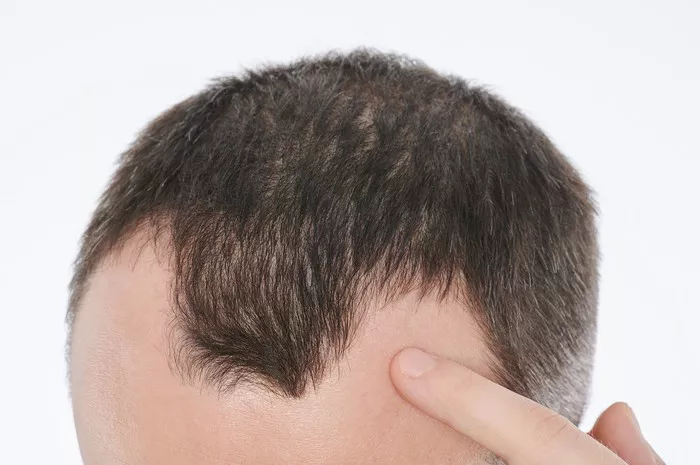Undergoing a hair transplant is a significant step towards regaining a fuller head of hair and restoring confidence. After the procedure, it’s crucial to follow proper post-transplant care to ensure optimal healing and successful hair growth. One common question that arises is, “When can you touch your hair after a hair transplant?” In this comprehensive guide, we will address this important topic and provide you with the necessary guidelines for handling and caring for your transplanted hair. With a focus on experience, professionalism, authority, and credibility, we aim to empower you with the knowledge to navigate the post-transplant phase with confidence and care.
Understanding the Hair Transplant Healing Process
Hair Transplant Overview:
An introduction to the hair transplant procedure, including the different techniques employed and the general healing timeline.
Immediate Post-Transplant Phase:
Explaining the initial period after the hair transplant, including the placement of grafts, the healing of donor and recipient areas, and the formation of scabs.
Factors Affecting the Timing of Hair Touching
Healing Progress:
Understanding the stages of healing after a hair transplant and how it relates to the ability to touch the transplanted hair.
Graft Stability:
Exploring the time it takes for the transplanted grafts to firmly anchor in the recipient area, ensuring their stability when touched.
Guidelines for Touching Your Hair After a Hair Transplant
Initial Care Instructions:
Providing specific instructions on how to care for your transplanted hair in the early days following the procedure, including avoiding any direct contact or manipulation.
Scab Clearance:
Guidelines on when it is safe to gently clean and remove scabs from the transplanted area, with the guidance of your hair transplant surgeon.
Gradual Introduction of Touching:
Explaining the recommended timeline for gradually reintroducing touch to your hair, considering the healing progress, absence of complications, and the advice of your surgeon.
When Can You Wear A Hat After Hair Transplant?
After undergoing a hair transplant, many individuals are eager to resume their regular activities, including wearing hats. However, it’s important to exercise caution and follow the proper timeline to ensure optimal healing and the best possible results. So, when can you wear a hat after a hair transplant?
In the immediate post-transplant phase, it is generally recommended to avoid wearing hats to allow for proper healing and graft stabilization. The transplanted hair follicles need time to establish a strong connection with the surrounding tissues. Wearing a hat during this early stage can cause friction, pressure, and potential dislodging of the grafts.
Typically, after the first week or two, when the transplanted grafts have started to anchor in the recipient area, you can gradually reintroduce hat usage. However, it’s crucial to consult with your hair transplant surgeon for personalized guidance based on your specific healing progress. They will assess the stability of the grafts and provide recommendations on when it is safe to wear a hat.
When you do start wearing a hat, choose one that allows sufficient airflow and doesn’t put excessive pressure on the transplanted area. Opt for loose-fitting hats made of breathable materials to minimize any potential rubbing or irritation.
Remember to maintain good hat hygiene by keeping it clean and avoiding excessive sweating under the hat. Proper hygiene practices will help prevent any risk of infection or damage to the healing grafts.
In conclusion, the timing for wearing a hat after a hair transplant varies based on individual healing progress. It’s important to follow the guidance of your hair transplant surgeon and gradually reintroduce hat usage to ensure a successful and comfortable recovery.
Additional Tips for Hair Care After a Hair Transplant
Gentle Hair Washing:
Explaining the proper technique and timeline for washing your hair after a hair transplant to ensure cleanliness and avoid disrupting the healing process.
Avoidance of Excessive Force:
Guidelines on handling your transplanted hair with care, avoiding excessive force, pulling, or rubbing that may compromise graft survival.
Regular Follow-Up Visits:
Highlighting the importance of attending follow-up visits with your hair transplant surgeon to monitor progress, address any concerns, and receive personalized guidance on when it is safe to touch your hair.
Conclusion:
Caring for your hair after a hair transplant is a critical aspect of ensuring successful results. While it may be tempting to touch and style your new hair, it’s essential to follow the recommended guidelines and timeline for touching your transplanted hair. By exercising patience, following proper care instructions, and consulting with your hair transplant surgeon, you can support the healing process and promote the growth of healthy, natural-looking hair. Remember, each individual’s healing timeline may vary, so it’s crucial to seek personalized guidance from your surgeon for the best possible outcome.
Related topics:
- When can you wear a hat after hair transplant
- Where Do celebrities get hair transplants
- The Longevity of Hair Transplants: How Long Does It Last?


